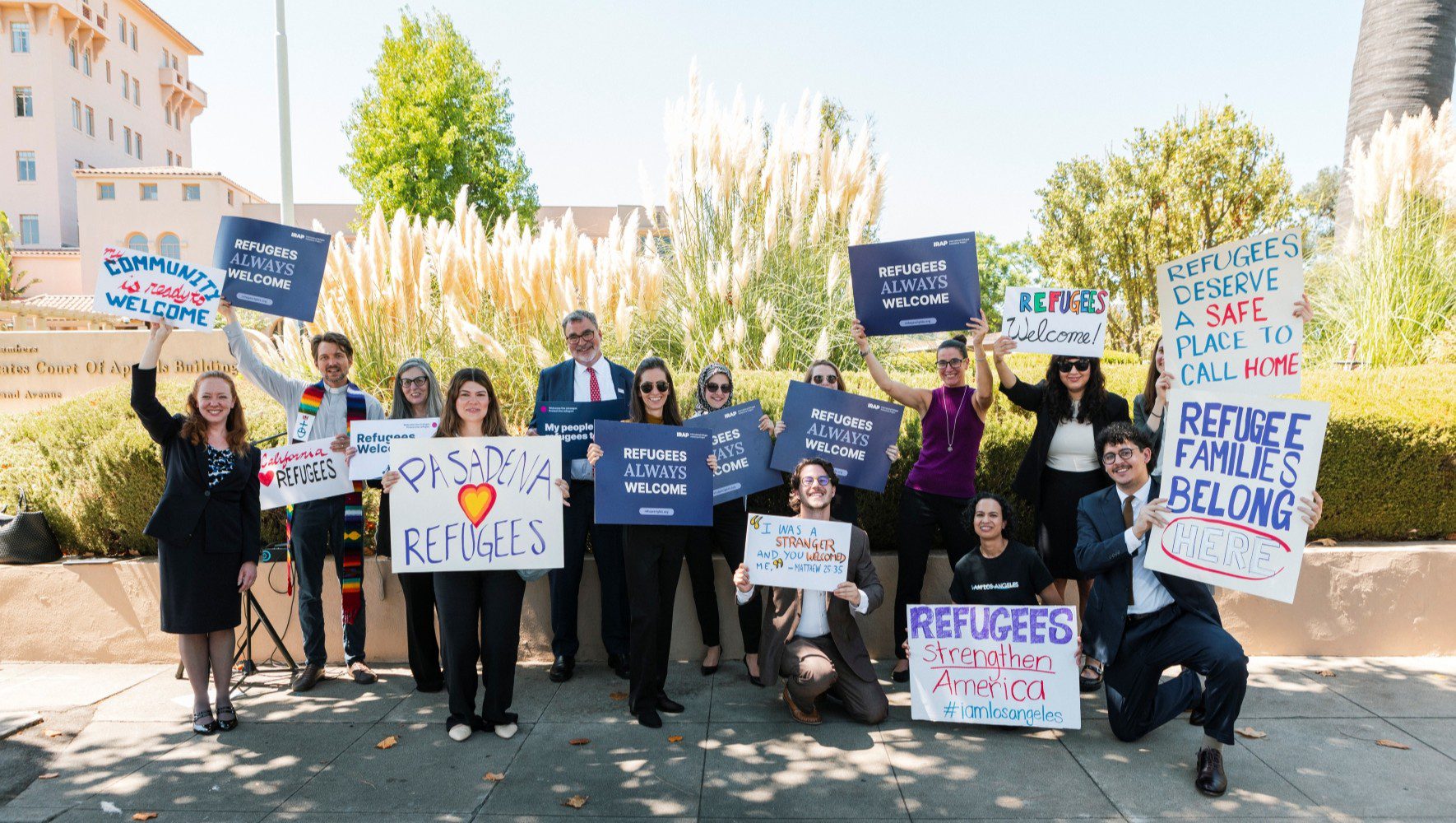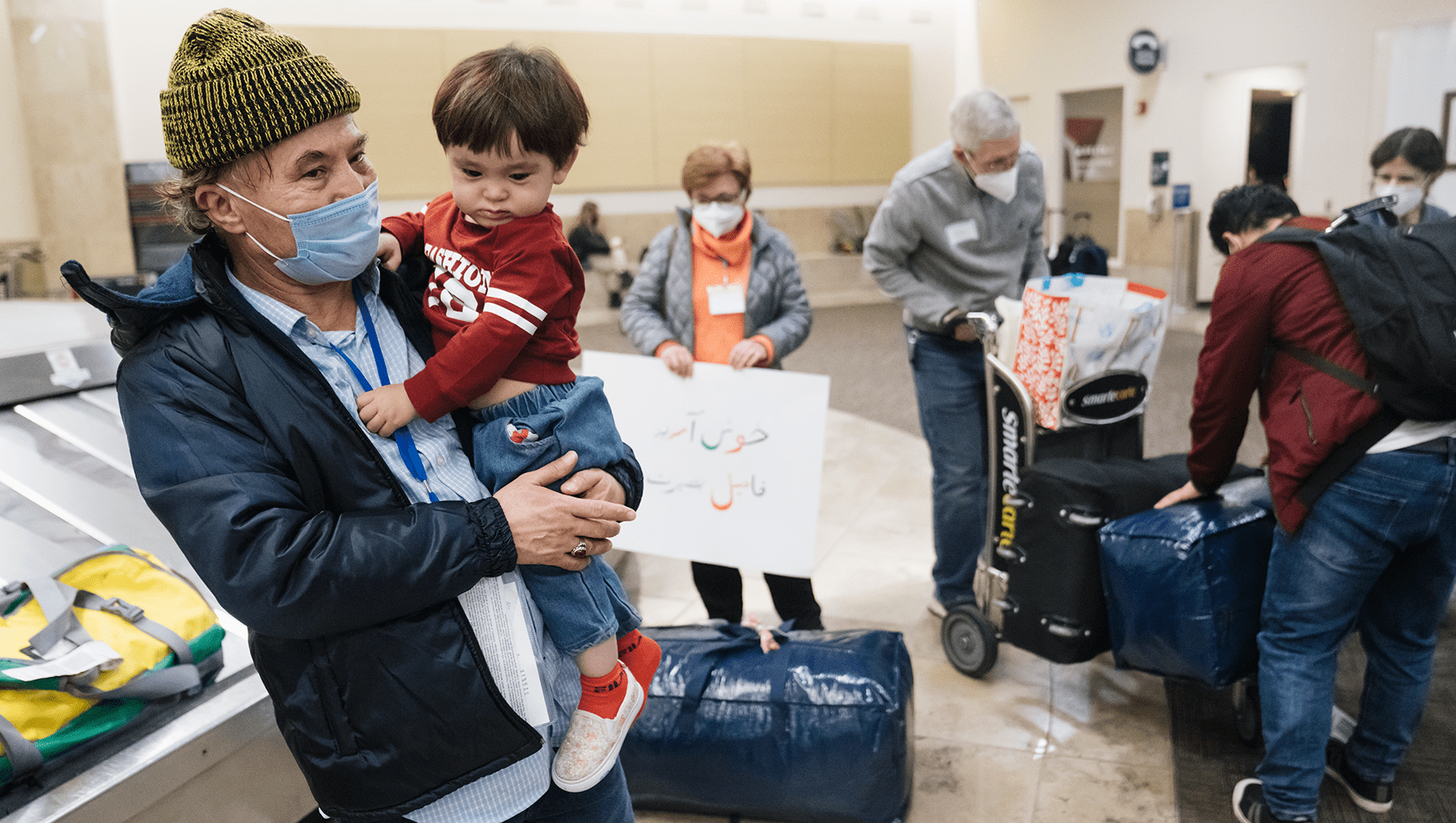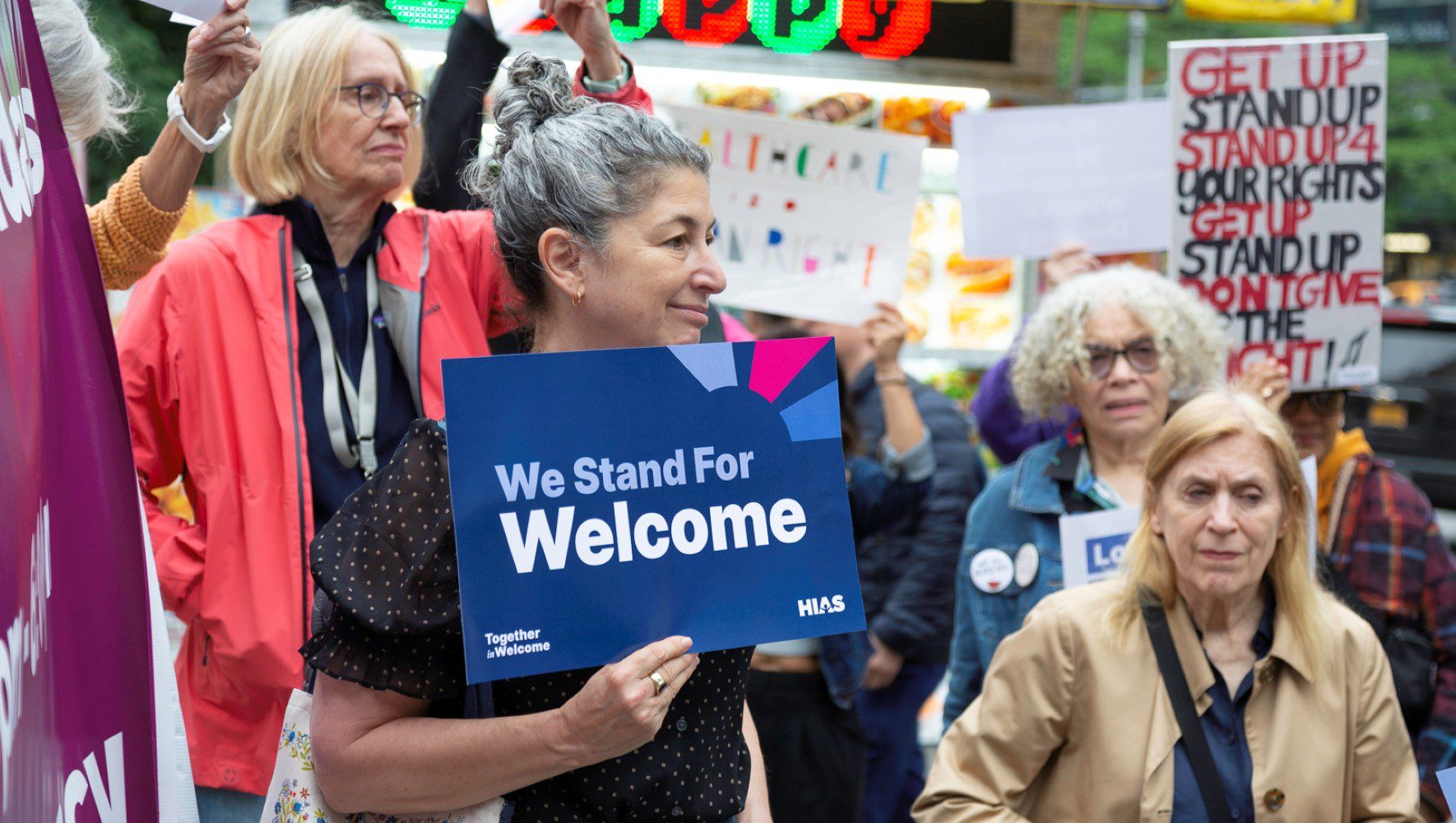Why This Refugee Ban is Just as Bad as the First Two
By Gabe Cahn, HIAS.org
Oct 26, 2017

A protester displays a placard during Jewish Rally for Refugees at the Battery Park in New York on February 12, 2017, to protest U.S. President Donald Trumps Executive Order suspending the U.S. refugee program.
(Jewel Samad/AFP/Getty Images)
When President Trump signed the first executive order banning refugees on January 27, the chaos and the cruelty was palpable. Protesters rushed to airports, refugees were pulled off of airplanes and detained at the border; the immediate impact was impossible to ignore.
That iteration of the ban was defeated in court, and the March 6 version of the executive order was largely blocked as well.
In the weeks and months since, the Trump Administration has continued to relentlessly craft, implement and defend policies that slam the door on refugees, immigrants and asylum seekers, though often times done so away from the spotlight.
While the technicalities of the policies may change shape in response to the ongoing litigation and public pressure, it has become apparent that the administration will not cease its efforts to vilify refugees and scale back America’s capacity to offer safe haven.
Similarly, the new “enhanced vetting procedures” announced on October 24 might appear on the surface to be more benign than the first two executive orders, but these new rules will prevent already-vetted refugees from finding safety here in the near future, or at all.
The 90 day ban for refugees from 11 countries will mean more confusion and heartbreak for thousands stuck in limbo. The 11 countries—Egypt, Iran, Iraq, Libya, Mali, North Korea, Somalia, Sudan, South Sudan, Syria, Yemen—accounted for nearly half of all refugee admissions in Fiscal Year 2017. The administration also wants to keep the spouses and children of refugees from reuniting with their family members who are in the United States.
“The U.S. is decimating the refugee resettlement program at a time of unprecedented global need,” said Mark Hetfield, HIAS’ president and CEO, in response to the order.
“Refugees are already the most vetted people coming to this country,” added Hetfield. “These new requirements will not make us safer.”
20 former top U.S. national security officials, including former Secretaries of State Madeleine Albright and Henry Kissinger, and former Secretaries of Defense Leon Panetta and Chuck Hagel, signed a letter in 2015 attesting to safety of the refugee program.
They wrote that refugees are “vetted more intensively than any other category of traveler,” and that “resettlement initiatives help advance U.S. national security interests by supporting the stability of our allies and partners that are struggling to host large numbers of refugees.”
Still, in the face of the highest level of refugees and displaced people in recorded history, President Trump has dramatically withdrawn U.S. efforts to alleviate the global crisis. In September, he set the 2018 refugee admissions ceiling at 45,000—the lowest in history.
In response, HIAS and other advocacy groups are now calling on Congress to step in and reassert America’s humanitarian leadership.
For HIAS’ supporters in the American Jewish community, the call to welcome remains paramount. 380 congregations have joined the HIAS Welcome Campaign, a national network of local communities advocating for, and directly assisting in, refugee resettlement.
The road ahead for protecting the refugee admissions program will be long, but working together, we can ensure that America welcomes refugees at a level proportionate to the global crisis and in line with our capacity, history and values.
To see a full timeline recapping the the refugee ban from January 27 until today, click here.


